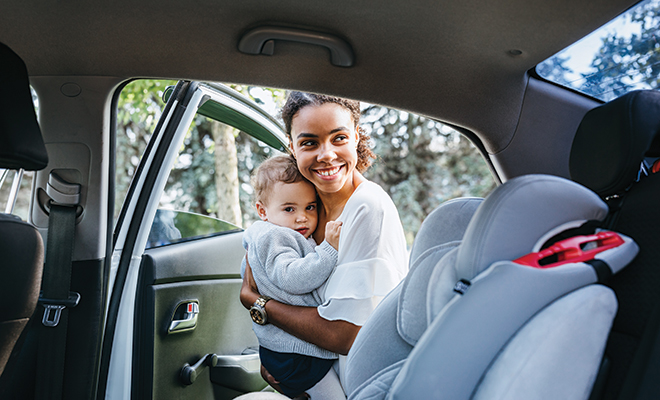
Hot Cars and Child Safety
We’ve heard the heartbreaking stories of a sleep-deprived parent, a hot car, an infant and a mistake that will haunt them for the rest of their life. In 2019, 52 children lost their lives in this manner. The reality is that non-traffic child/car-related deaths are not limited to a child’s being left unattended in a vehicle. There are many dangers when it comes to kids and cars, but there are also steps we can all take to eliminate fatal outcomes.
According the non-profit KidsandCars.org, roughly 2,400 child or infant deaths occur each year from non-traffic related accidents. Non-traffic incidents are injuries or deaths that occur in or around a vehicle; but take place off public roads or highways, mainly in parking lots or driveways.
These incidents include, but are not limited to; backovers, frontovers, heat stroke, power window strangulation or amputation, vehicles inadvertently knocked into gear, trunk entrapment, seat belt strangulation and underage drivers.
Those statistics are on the decline thanks to legislation and increased public awareness, but there is still work to be done. The Hot Cars Act of 2019, introduced in the House on June 28, 2019, requires the Department of Transportation to “issue a final rule requiring all new passenger motor vehicles weighing 10,000 pounds or less to be equipped with an alert system to detect the presence of an occupant in a rear designated seating position after the vehicle engine is turned off. DOT must also consider requiring systems that can detect the presence of any occupant unable to independently exit the vehicle and the presence of a child who has entered an unoccupied vehicle independently.” The alert must be auditory and visual to notify people inside and outside the vehicle of the presence of an occupant.
Major automakers already install or plan to offer detection and alert systems in new vehicles in advance of the legislation that will mandate it by 2025.
Ford’s 2020 model year rear occupant alert system is based on input from the ignition and door ajar switches. GM’s system uses chimes and an instrument panel reminder to prompt the driver to check the back seat after a rear door is opened and closed while the engine is on or up to ten minutes before the vehicle is turned on. The 2020 Hyundai Santa Fe and Palisade SUVs have standard door logic sensing capability and offer a motion sensor system as an option; Hyundai expects to have this feature standard by 2022. Nissan models check whether doors are opened at the start of a trip but not after the engine stops.
But there are also steps that each parent or caregiver can take daily to form the habits that increase family safety.
The Look Before You Lock mantra is being shared in the form of education cards for new parents that have been distributed to hospitals and birthing centers nationwide to help educate parents at beginning of their child’s life. Parents who have ever been sleep-deprived know that their brains switch to auto-pilot and they virtually sleepwalk through their day. Leaving necessary and valuable items such as purses or briefcases in the backseat next to their sleeping child can jar memories and prevent fatal mistakes.
Other suggestions are to leave a stuffed animal in the car seat and place it in the front after strapping the child in the car seat. Parents are advised that keys and remote openers should never be left within reach of children, and to keep car doors locked at all times.
According to 2007 data from the National Highway Traffic Safety Administration, backover accidents account for around 42 percent of all non-traffic related auto fatalities involving children each year and frontovers account for another 22 percent. Sadly, most of the time it’s a relative behind the wheel, often a parent, who runs the child over with the family vehicle.
Be aware of the location of your non-passenger children. When backing out of or entering a driveway or garage, take note where the child is at all times. The reality is that kids are low to the ground and many of today’s vehicles are large enough to have blind spots on all four sides. Have someone else hold infants or toddlers and have younger children stand in a safe zone, such as a front step or inside a porch, to make sure they are in eyesight at all times.
Gene Weingarten’s Pulitzer prize-winning Washington Post article, Fatal Distraction, on March 9, 2009, is recommended reading for all who transport children; Susan Morgan Cooper’s documentary film, Fatal Distraction, also brings awareness to the tragedy and rising phenomenon of hot car deaths. By being aware and working together, everyone can strive for zero accidents and deaths for children. ■
Sources: keepyourchildsafe.org, kidsandcars.org and washingtonpost.com and autonews.com.







